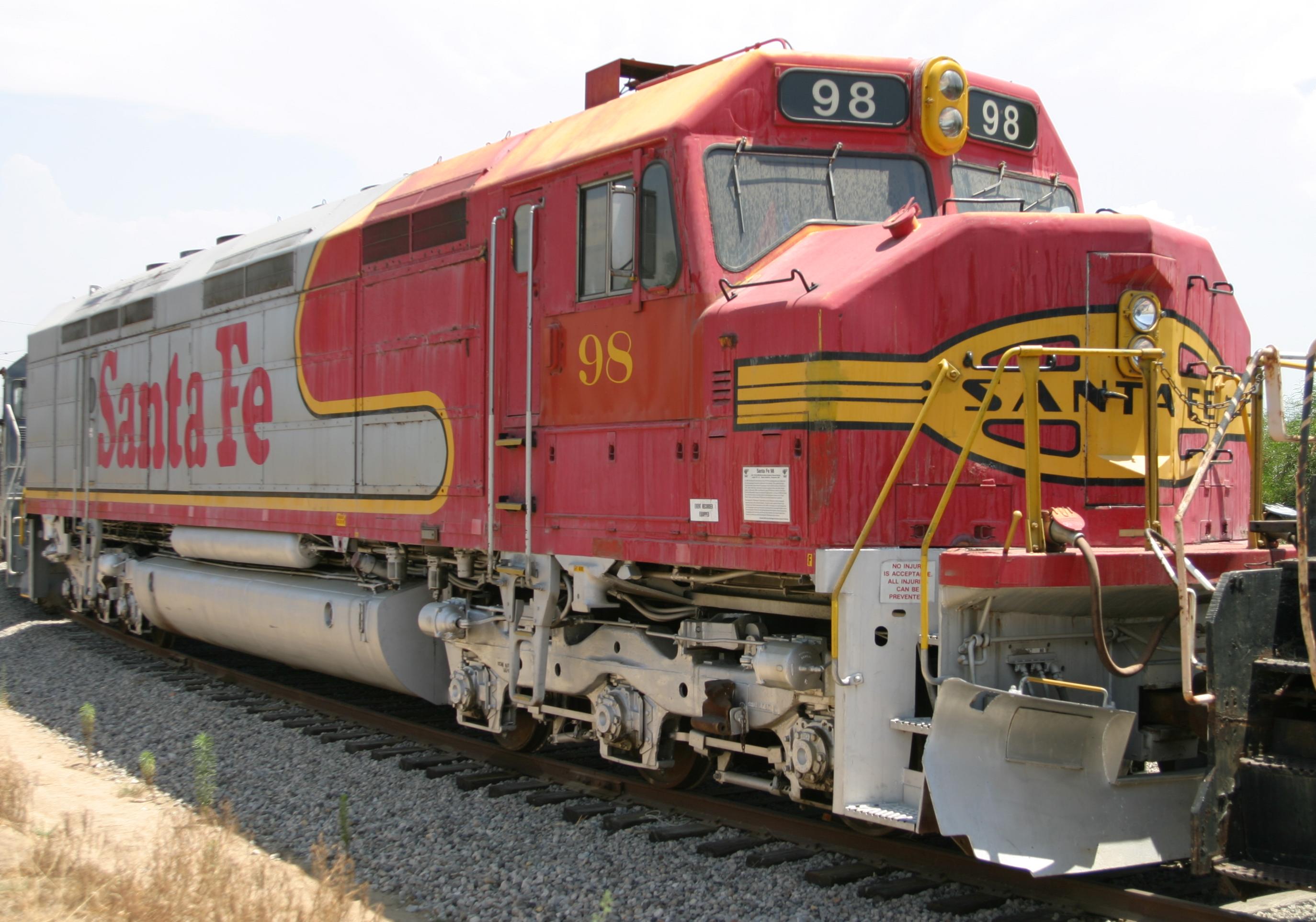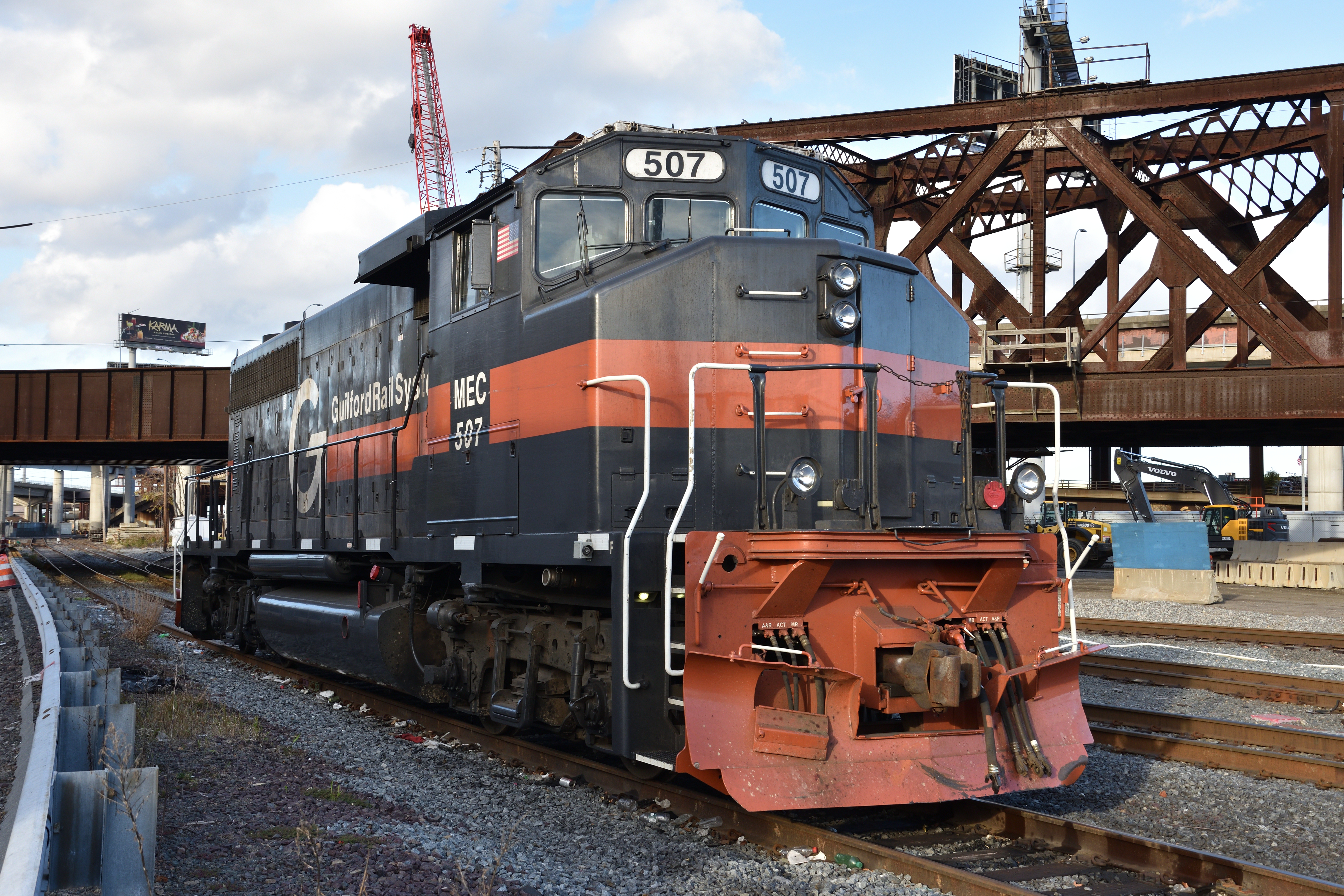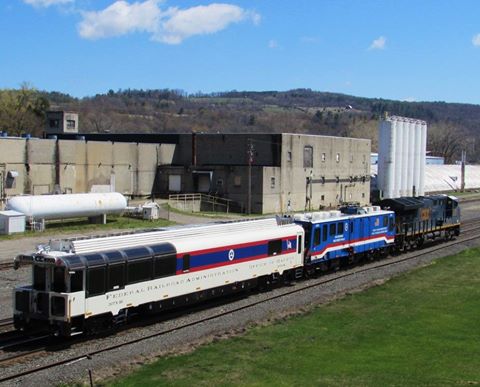|
Canadian Comfort Cab
The Canadian comfort cab or wide cab or North American Safety Cab is a broad-nosed cab design found on modern North American diesel locomotives, and some export models. It occupies the entire width of the locomotive, and typically has an access door on the front of the nose. The term ''wide cab'' is somewhat of a misnomer because it is the nose, not the cab, that is widened. Development The basic shape of the Canadian comfort cab first appeared on a hood unit, the EMD DDA40X, in 1969. It was the same design as the F45 and FP45 cowl units being built by EMD at the time. The cab used on the DDA40X was not a true Canadian comfort (or "Safety") cab because it consisted mainly of restyled sheet metal and lacked the structural reinforcements of the Canadian design. EMD Design The first true Canadian cabs were designed and built for the Canadian National Railway by input from railway employees. The locomotives were GP38-2s, GP40-2s and GP40-2Ls, and SD40-2s. To denote the pre ... [...More Info...] [...Related Items...] OR: [Wikipedia] [Google] [Baidu] |
Santa Fe 98
Santa Fe 108, formerly Santa Fe 98 (BNSF 98), is a 1967 General Motors Electro-Motive Division FP45 diesel locomotive once owned by the Atchison, Topeka and Santa Fe Railway and is today on permanent, operational display at the Southern California Railway Museum in Perris, California. With its , 20-cylinder prime mover and six traction motors, the FP45 was intended for fast passenger service and is geared to run in excess of . It is especially notable as being the last passenger locomotive purchased by the railroad and was used on Santa Fe's finest passenger trains, including the ''Super Chief'' between Chicago and Los Angeles. Relegated to freight service in 1971 when passenger rail operations were transferred to Amtrak, 108's paint scheme was slightly altered to have the large red Santa Fe lettering. It continued regular revenue freight service until it was renumbered to 98 in the early 1990's and transferred to BNSF after the ATSF and BN merged in 1995. It kept its number an ... [...More Info...] [...Related Items...] OR: [Wikipedia] [Google] [Baidu] |
EMD GP40-2
The EMD GP40-2 is a 4-axle diesel locomotive built by General Motors Electro-Motive Division as part of its Dash 2 line between April 1972 and December 1986. The locomotive's power is provided by an EMD 645E3 16-cylinder engine which generates . Production Standard GP40-2 production totaled 861 units, with 817 built for U.S. railroads, and 44 for Mexican railroads. In addition, three GP40P-2s, passenger versions of the GP40-2, were built in 1974 and 279 were built by General Motors Diesel (GMD) between 1974 and 1976. Total production of the GP40-2 and its variations totaled 1,143 units. Performance With the 62:15 gearing (65-70 mph maximum) EMD rated the GP40-2 at 55,400 lb continuous tractive effort. Some had PF21 module that reduced the output below 23 mph, lowering continuous speed down to 11 mph. Original buyers ;GP40-2LW ;GP40P-2 Preservation Sonora Baja California 2107 is now preserved in a Museum in Mexicali, MX See also *List of ... [...More Info...] [...Related Items...] OR: [Wikipedia] [Google] [Baidu] |
Locomotive Parts
A locomotive or engine is a rail transport vehicle that provides the motive power for a train. If a locomotive is capable of carrying a payload, it is usually rather referred to as a multiple unit, motor coach, railcar or power car; the use of these self-propelled vehicles is increasingly common for passenger trains, but rare for freight (see CargoSprinter). Traditionally, locomotives pulled trains from the front. However, push-pull operation has become common, where the train may have a locomotive (or locomotives) at the front, at the rear, or at each end. Most recently railroads have begun adopting DPU or distributed power. The front may have one or two locomotives followed by a mid-train locomotive that is controlled remotely from the lead unit. __TOC__ Etymology The word ''locomotive'' originates from the Latin 'from a place', ablative of 'place', and the Medieval Latin 'causing motion', and is a shortened form of the term ''locomotive engine'', which was first ... [...More Info...] [...Related Items...] OR: [Wikipedia] [Google] [Baidu] |
Locomotive
A locomotive or engine is a rail transport vehicle that provides the Power (physics), motive power for a train. If a locomotive is capable of carrying a payload, it is usually rather referred to as a multiple unit, Motor coach (rail), motor coach, railcar or power car; the use of these self-propelled vehicles is increasingly common for passenger trains, but rare for freight (see CargoSprinter). Traditionally, locomotives pulled trains from the front. However, Push-pull train, push-pull operation has become common, where the train may have a locomotive (or locomotives) at the front, at the rear, or at each end. Most recently railroads have begun adopting DPU or distributed power. The front may have one or two locomotives followed by a mid-train locomotive that is controlled remotely from the lead unit. __TOC__ Etymology The word ''locomotive'' originates from the Latin language, Latin 'from a place', Ablative case, ablative of 'place', and the Medieval Latin 'causing mot ... [...More Info...] [...Related Items...] OR: [Wikipedia] [Google] [Baidu] |
Electro-Motive Diesel
Progress Rail Locomotives, doing business as Electro-Motive Diesel (EMD), is an American manufacturer of diesel-electric locomotives, locomotive products and diesel engines for the rail industry. The company is owned by Caterpillar through its subsidiary Progress Rail. Electro-Motive Diesel traces its roots to the Electro-Motive Engineering Corporation, a designer and marketer of gasoline-electric self-propelled rail cars founded in 1922 and later renamed Electro-Motive Company (EMC). In 1930, General Motors purchased Electro-Motive Company and the Winton Engine Co., and in 1941 it expanded EMC's realm to locomotive engine manufacturing as Electro-Motive Division (EMD). In 2005, GM sold EMD to Greenbriar Equity Group and Berkshire Partners, which formed Electro-Motive Diesel to facilitate the purchase. In 2010, Progress Rail completed the purchase of Electro-Motive Diesel from Greenbriar, Berkshire, and others. EMD's headquarters, engineering facilities and parts manufacturing ... [...More Info...] [...Related Items...] OR: [Wikipedia] [Google] [Baidu] |
Cinder Block
A concrete masonry unit (CMU) is a standard-size rectangular block used in building construction. CMUs are some of the most versatile building products available because of the wide variety of appearances that can be achieved using them. Those that use cinders (fly ash or bottom ash) as an aggregate material are called cinder blocks in the United States, breeze blocks (''breeze'' is a synonym of ''ash'') in the United Kingdom, and hollow blocks in the Philippines. In New Zealand and Canada they are known as concrete blocks (a name common in the United States also). In New Zealand, they are also called construction blocks. In Australia, they are known as Besser blocks or Besser bricks, because the Besser Company was a major supplier of machines that made concrete blocks. Clinker blocks use clinker as aggregate. In non-technical usage, the terms ''cinder block'' and ''breeze block'' are often generalized to cover all of these varieties. Composition Concrete blocks are made ... [...More Info...] [...Related Items...] OR: [Wikipedia] [Google] [Baidu] |
Federal Railroad Administration
The Federal Railroad Administration (FRA) is an agency in the United States Department of Transportation (DOT). The agency was created by the Department of Transportation Act of 1966. The purpose of the FRA is to promulgate and enforce rail safety regulations, administer railroad assistance programs, conduct research and development in support of improved railroad safety and national rail transportation policy, provide for the rehabilitation of Northeast Corridor rail passenger service, and consolidate government support of rail transportation activities. The FRA is one of ten agencies within DOT concerned with intermodal transportation. It operates through seven divisions under the offices of the Administrator and Deputy Administrator. These divisions are: Financial Management and Administration, Chief Counsel, Civil Rights, Public Affairs, Public Engagement, Railroad Policy and Development, and Safety. It has a staff of about 850. Function All passenger and freight rail ... [...More Info...] [...Related Items...] OR: [Wikipedia] [Google] [Baidu] |
ALCO Century 630
The ALCO Century 630 is a model of six-axle, diesel-electric locomotive built by the American Locomotive Company (ALCO) between 1965 and 1967. It used the ALCO 251 prime mover. 77 were built: 3 for Atlantic Coast Line Railroad, 4 for Chesapeake and Ohio Railway, 8 for Louisville and Nashville Railroad, 10 (with high noses) for Norfolk and Western Railway, 15 for Pennsylvania Railroad, 12 for the Reading Company, 15 for Southern Pacific Railroad and 10 for Union Pacific Railroad. Montreal Locomotive Works produced a C630M variant of the C630, with 4 for British Columbia Railway, 8 for Canadian Pacific Railway and 44 for Canadian National. MLW M630s were built by Montreal Locomotive Works from 1969 to 1973: 29 for CPR, 26 for BCR, and 20 for Ferrocarriles Nacional de Mexico (N de M). Eight of the BCR locomotives were designated M630(W) and were built with a wide-nosed cab, known as the "Canadian" or "safety" cab. The latter two models, along with the nearly identical MLW ... [...More Info...] [...Related Items...] OR: [Wikipedia] [Google] [Baidu] |
MLW M-420
The MLW M-420 was a diesel-electric locomotive manufactured between 1973 and 1977 in Montreal, Canada by the Montreal Locomotive Works. A total of 88 units were built for Canadian railways, including eight B units built for the British Columbia Railway; most of production went to Canadian National. Only seven units were sold outside of Canada, to the State Railways Institution in Venezuela and the Providence and Worcester Railroad in the United States. The M-420 was one of the first locomotive models (along with the EMD GP38-2) to use the wide-nosed Canadian comfort cab, pioneered by Canadian National. By the early 1990s, variations on this cab design had become the standard of the industry. As with wide-nosed General Motors Diesel units from the same period, references to the model commonly add a "W" at the end of the model name, but it is not part of the official model designation. Most M-420 units rode on MLW ZWT (Zero Weight-Transfer) trucks. Variations Other variations of th ... [...More Info...] [...Related Items...] OR: [Wikipedia] [Google] [Baidu] |
Montreal Locomotive Works
Montreal Locomotive Works (MLW) was a Canadian railway locomotive manufacturer which existed under several names from 1883 to 1985, producing both steam and diesel locomotives. For a number of years it was a subsidiary of the American Locomotive Company. MLW's headquarters and manufacturing facilities were located in Montreal, Quebec. Early history The Locomotive and Machine Company of Montreal Limited was created in 1883, producing primarily for the growing domestic market—notably the Canadian Pacific Railway, the Grand Trunk Railway, the Intercolonial Railway and, after 1922, the Canadian National Railway. Purchase by Alco In 1901, the American Locomotive Company (Alco) headquartered in Schenectady, New York, was formed by the merger of several struggling locomotive manufacturers. Alco purchased the Locomotive & Machine Company of Montreal in 1904 to tap into the Canadian market with its emerging designs. The Montreal subsidiary was renamed Montreal Locomotive Works (ML ... [...More Info...] [...Related Items...] OR: [Wikipedia] [Google] [Baidu] |
EMD SD40-2
The EMD SD40-2 is a C-C diesel-electric locomotive built by EMD from 1972 to 1989. The SD40-2 was introduced in January 1972 as part of EMD's '' Dash 2'' series, competing against the GE U30C and the ALCO Century 630. Although higher-horsepower locomotives were available, including EMD's own SD45-2, the reliability and versatility of the SD40-2 made it one of the best-selling models in EMD's history, edged only by the GP9, and the standard of the industry for several decades after its introduction. The SD40-2 was an improvement over the SD40, with modular electronic control systems similar to those of the experimental DDA40X. Peak production of the SD40-2 was in the mid-1970s. Sales of the SD40-2 began to diminish after 1981 due to the oil crisis, increased competition from GE's Dash-7 series and the introduction of the EMD SD50, which was available concurrently to late SD40-2 production. The last SD40-2 delivered to a United States railroad was built in July 1984, with pro ... [...More Info...] [...Related Items...] OR: [Wikipedia] [Google] [Baidu] |



.jpg)



